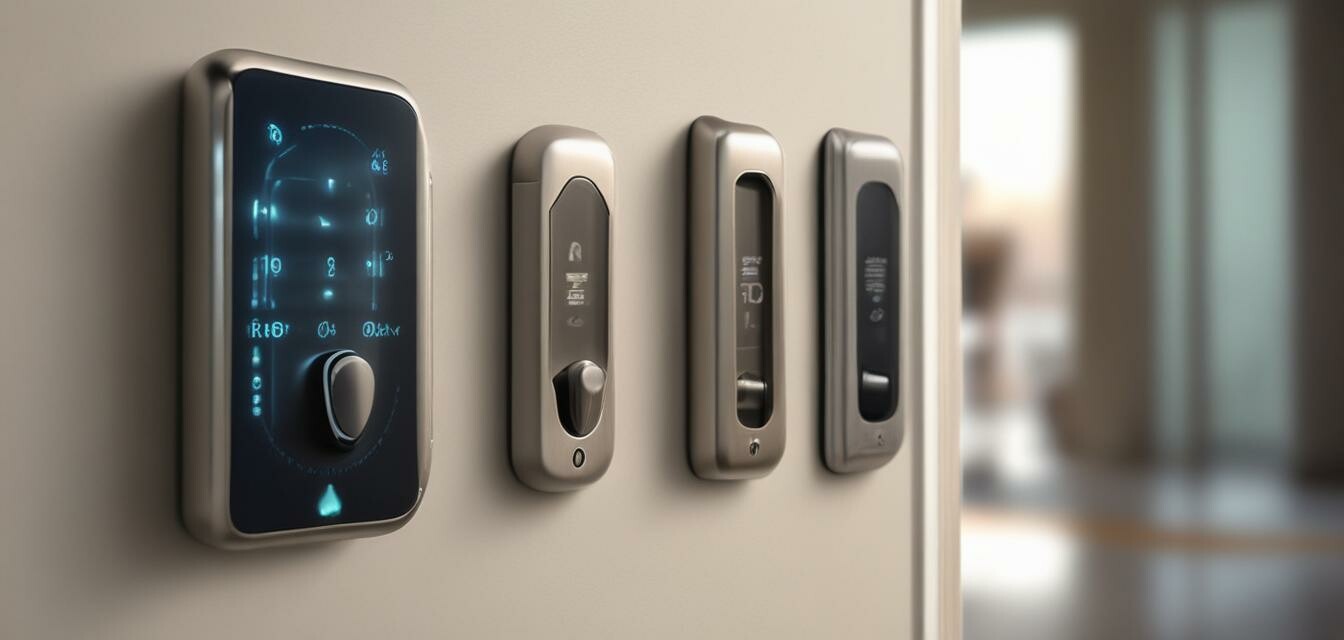
Essential Features of Modern Smart Locks
Smart locks have revolutionized home security, offering not only enhanced safety but also unparalleled convenience. However, choosing the right smart lock can be overwhelming with so many options available. In this article, we’ll outline the essential features you should consider before making a purchase, emphasizing security, convenience, and the latest technological advancements.
- Choose locks with robust encryption to safeguard against hacking.
- Look for features such as remote access and keyless entry for added convenience.
- Ensure compatibility with your home’s smart system for seamless integration.
- Consider locks with backup options like a physical key or keypad entry.
- Assess battery life and installation options before buying.
Understanding Smart Locks
Smart locks incorporate technology that allows users to lock and unlock doors from their smartphones or other devices. They can be programmed to grant access to family and friends without the need for physical keys. Before investing in a smart lock, it’s essential to understand the key features to look for.
Essential Features of Smart Locks
| Feature | Description | Benefits |
|---|---|---|
| Remote Access | Ability to control your lock from a smartphone app. | Monitor access and manage entry from anywhere. |
| Keyless Entry | Entry through mobile devices or keypads, eliminating the need for keys. | Convenience and security, mindful of lost keys. |
| Robust Security | Encryption and security protocols to protect against hacking. | Peace of mind knowing your home is secure. |
| Backup Options | Features like physical keys or access codes for emergencies. | Redundancy in case electronic systems fail. |
| Long Battery Life | Extended usage before battery replacement is needed. | Less hassle and maintenance for the homeowner. |
1. Remote Access
Remote access enables you to lock or unlock your door from virtually anywhere, ensuring you can manage entry for maintenance workers, family, or service providers even if you're away. Many smart locks also offer activity logs that let you track who has entered or exited your home. This feature is particularly useful for rental properties or homes with multiple visitors.
2. Keyless Entry
Keyless entry systems remove the hassle of carrying physical keys. With smart locks, you can use your smartphone to unlock your door or input a code on a keypad. This is not only convenient but also keyless entry systems make it significantly harder for intruders to gain access.
3. Robust Security
When it comes to securing your home, robust security measures are non-negotiable. Look for smart locks that implement high-level encryption protocols, making it difficult for potential hackers to breach your system. Security features like auto-lock and tamper alerts further enhance safety.
4. Backup Options
Smart locks should have backup options just in case the digital interface fails. Many modern smart locks allow physical keys or a touchscreen keypad entry as a backup. This ensures you won’t be locked out of your home during unexpected outages.
5. Long Battery Life
Smart home devices can be power-hungry, so it’s essential to choose smart locks that feature a long battery life. Some models offer low-battery alerts, which notify you in advance so you can replace or recharge batteries without compromising security.
Integration with Smart Home Systems
One key advantage of modern smart locks is their ability to integrate with other smart home systems. When selecting a smart lock, ensure it is compatible with your existing home automation setup. This allows for improved functionality, such as activating lights or alarms when the door is unlocked.
For more information on home automation devices, check out our guide on home automation devices.
Installation Considerations
Before purchasing, consider the installation process of the smart lock. Some models are designed for easy DIY installation, while others may require professional help. Make sure to review the installation requirements and the lock’s compatibility with your existing door hardware.
Conclusion
A smart lock is a robust solution for enhancing your home security while providing convenience. By considering the essential features highlighted in this guide, you can make an informed decision that suits your needs. Remember to prioritize security features, convenience, and compatibility to ensure you select a smart lock that will serve you well.
Tips for Using Smart Locks
- Regularly update the firmware to enhance security.
- Use two-factor authentication for added protection.
- Change access codes periodically to maintain security.
- Familiarize yourself with all features through the app.
Pros
- Convenience of keyless entry
- Remote monitoring and access
- Enhanced security through encryption
- Integration with other smart home devices
Cons
- Dependency on batteries
- Potential cybersecurity risks
- May need professional installation
Explore more about our smart lock offerings for a secure home solution.
